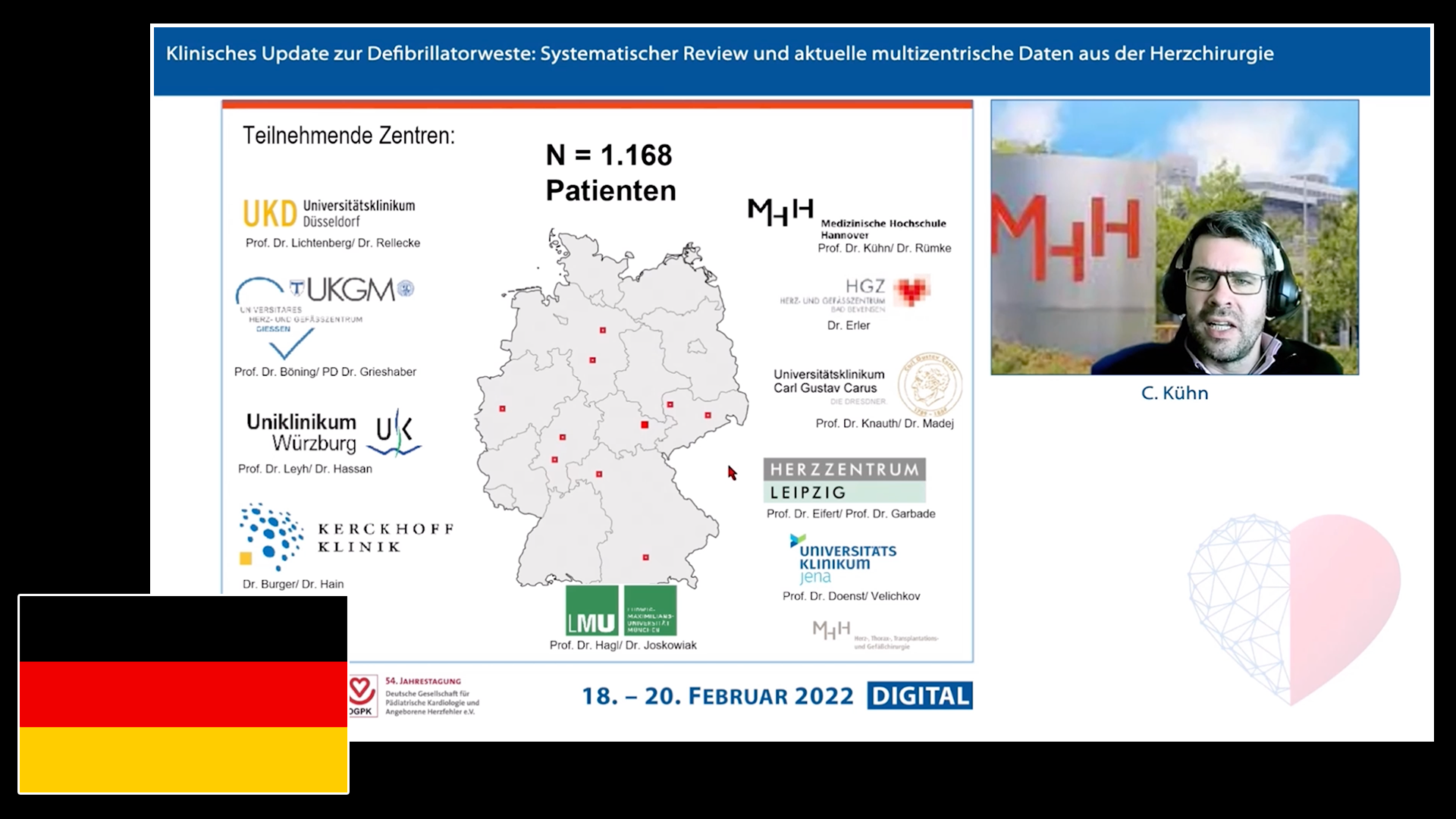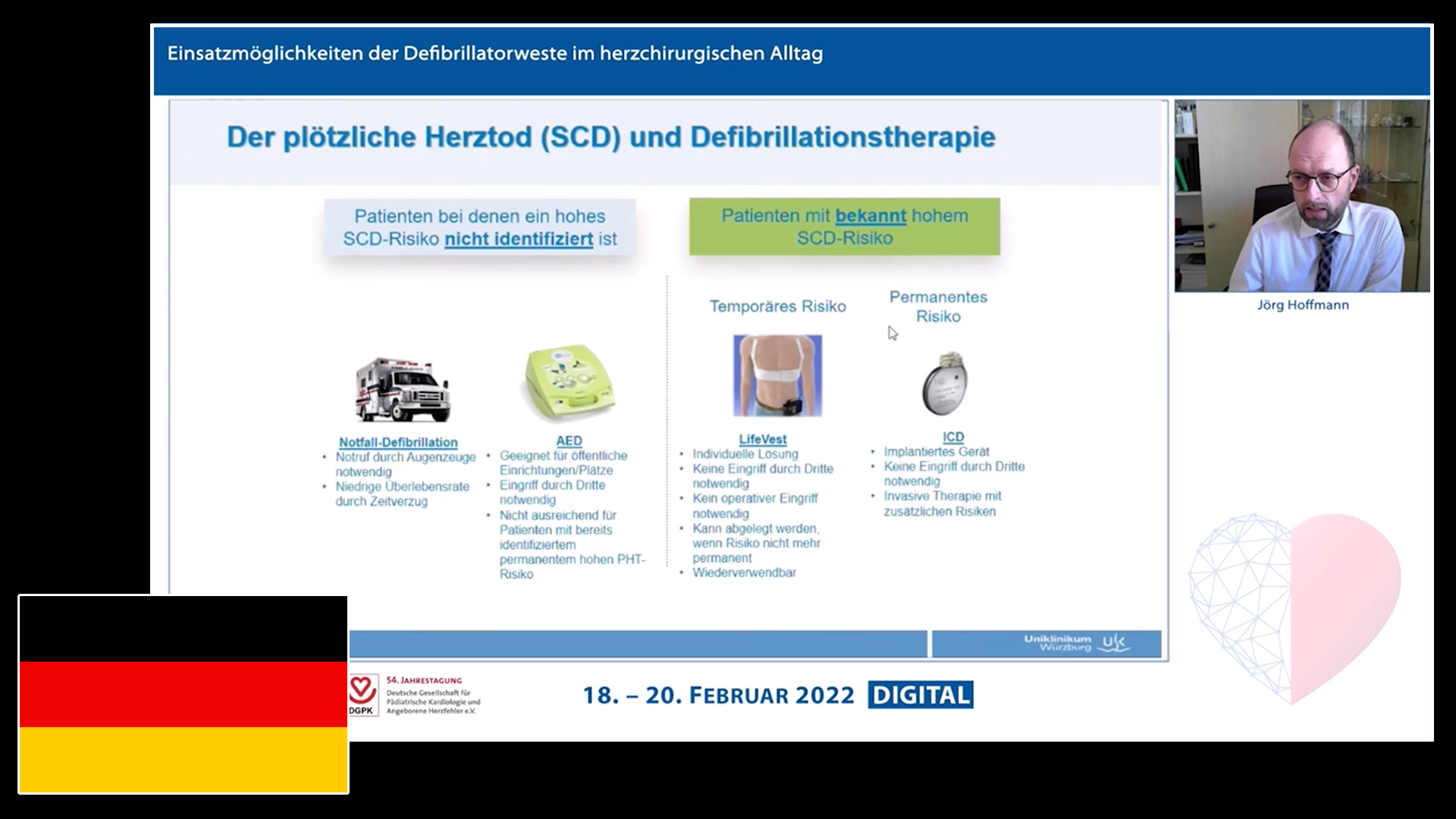DGTHG 2022
Published: 23 May 2022
-
Views:
 494
494
-
Likes:
 7
7
-
Views:
 494
494
-
Likes:
 7
7
Overview
DGTHG 2022
This page contains 5 clips of presentations from DGTHG 2022.
This content is sponsored by ZOLL

More from this programme
Part 1
DGTHG 2022, C. Kühn: Clinical Update on the Defibrillator Vest: Systematic Review and Current Multicentric Data From Cardiac Surgery
Postsurgical patients with severely compromised LVEF are at high risk for life-threatening arrhythmias within the first 90 days. The likelihood of WCD treatment is highest after ICD explantation and CABG. Despite the sternotomy, compliance was excellent at 23.4 h/d. Because LVEF improved at three months, only about 49% of patients required an ICD.
Part 2
DGTHG 2022, A. Haneya: Effective Risk Screening for Sudden Cardiac Death in Cardiac Surgery Patients
The WCD allows for an extended time window to evaluate an ICD implantation. Thus, the number of primary prophylactic ICD implantations can be reduced, which prove to be no longer indicated after the ventricular restitution. A clearly structured clinical process identifies patients with a high risk of SCD and provides them with the necessary therapy in a timely manner: WCD vs. permanent ICD.
Part 3
DGTHG 2022, J. Hoffmann: Possible Uses of the Defibrillator Vest in Everyday Cardiac Surgery
Dr. Hoffmann presents case studies in which the WCD is used as part of a guideline-based risk stratification. When prescribing, the clinic orients itself on its surgical spectrum and their own screening protocol. This also includes an interdisciplinary agreement between cardiology, cardiac surgery and rehabilitation, says Dr. Hoffman. In particular, patients with LVEF ≤35% who have advanced coronary heart disease while waiting for a planned cardiac surgery and those within 90 days of revascularization using CABG benefit from a WCD. The simplified reimbursement process in Germany as a result of the 2019 updated DME list is highly valued.
Part 4
DGTHG 2022, H. Burger: Discussion and Summary
Appropriate shocks occurred in between 1.1% and 1.6% in the first 60 days post-surgery. A defined screening protocol helps to filter out those patients that will benefit from a WCD in the early phase after a cardiac event. Furthermore, the WCD allows a patient connection to the care unit as well as patient monitoring through a vast amount of additional information through telemedicine. The speakers agree that the wearable cardioverter defibrillator is an established device to protect patients against sudden cardiac death and should be considered in cardiac surgery.










